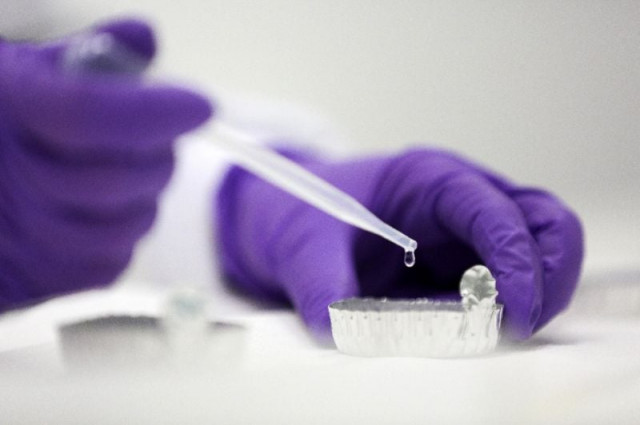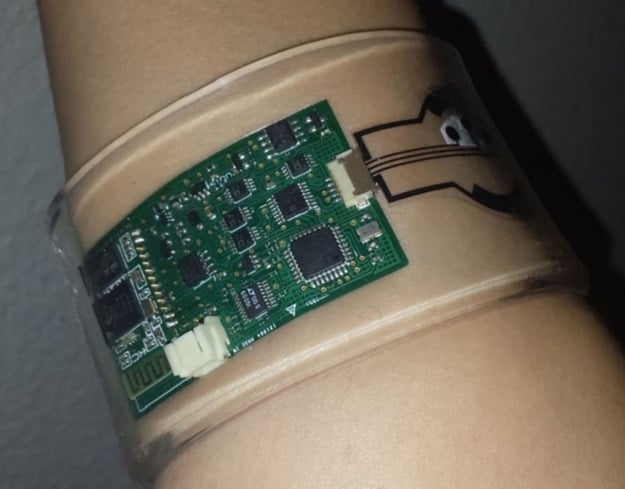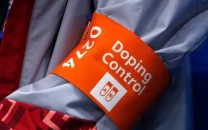Wearable sweat sensor could help diagnose disease
More research is needed to see if the wearable sweat sensor would work consistently from one day to the next

Researchers have designed a wearable device that contains flexible sensors and microprocessors that stick to the skin and stimulate sweat glands. PHOTO: AFP
Unlike previous sweat sensors, the new model requires only a trace of moisture to do its job and doesn't require patients to sit still for 30 minutes while it collects sweat. "This is a huge step forward," said co-author Carlos Milla, associate professor of pediatrics at Stanford University.
Zuckerberg charity buys AI startup to battle disease
The wearable device, designed in collaboration with researchers at the University of California, Berkeley, contains flexible sensors and microprocessors that stick to the skin and stimulate sweat glands. It detects the presence of different molecules and ions - for instance, sweat that contains more chloride generates a higher electrical voltage at the sensor's surface.
 A wearable device that extracts sweat and analyzes its constituents to monitor health and disease. Photo: Stanford School of Medicine
A wearable device that extracts sweat and analyzes its constituents to monitor health and disease. Photo: Stanford School of MedicineHigh chloride ion levels may indicate cystic fibrosis, while high blood glucose levels are a sign of diabetes. The sensor electronically transmits the results for analysis and diagnostics, according to the report in the Proceedings of the National Academy of Sciences.
Public health also needs science
Researchers hope the sensor might one day aid drug development and drug personalisation for cystic fibrosis, a genetic disease that causes mucus to build up in the lungs and pancreas, and which is notoriously hard to treat.
"CF drugs work on only a fraction of patients," said Sam Emaminejad, who is now an assistant professor of electrical engineering at University of California, Los Angeles (UCLA).
"Just imagine if you use the wearable sweat sensor with people in clinical drug investigations," he said. "We could get a much better insight into how their chloride ions go up and down in response to a drug."
More research is needed to see if the wearable sweat sensor would work consistently from one day to the next, since the contents of a person's sweat can change frequently based on diet and other factors.
Researchers also hope to learn more about which molecules in sweat can be mapped and may provide the most useful information.



















COMMENTS
Comments are moderated and generally will be posted if they are on-topic and not abusive.
For more information, please see our Comments FAQ